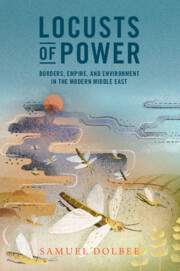Book contents
- Locusts of Power
- Reviews
- Studies in Environment and History
- Locusts of Power
- Copyright page
- Contents
- List of Figures and Maps
- Preface
- Acknowledgments
- Note on Spelling and Units of Measurement
- Introduction
- 1 Sultans of the Open Lands (1858–1890)
- 2 “Savage Swarms” (1890–1908)
- 3 “Weren’t We A Lot Like Those Creatures?” (1908–1918)
- 4 “Like Swarms of Locusts” (1918–1939)
- Conclusion
- Bibliography
- Index
1 - Sultans of the Open Lands (1858–1890)
Published online by Cambridge University Press: 16 June 2023
- Locusts of Power
- Reviews
- Studies in Environment and History
- Locusts of Power
- Copyright page
- Contents
- List of Figures and Maps
- Preface
- Acknowledgments
- Note on Spelling and Units of Measurement
- Introduction
- 1 Sultans of the Open Lands (1858–1890)
- 2 “Savage Swarms” (1890–1908)
- 3 “Weren’t We A Lot Like Those Creatures?” (1908–1918)
- 4 “Like Swarms of Locusts” (1918–1939)
- Conclusion
- Bibliography
- Index
Summary
Chapter 1 focuses on locusts and the Arabic-speaking Shammar nomadic group between 1858 and 1890. It explains how locusts foiled Ottoman attempts to transform the Jazira into a cotton-growing heartland in the midst of the American Civil War. As locusts challenged the designs of certain humans, they also ensured that the Jazira landscape remained productive depending on how one moved within it. It was in part the landscape created by locusts that undermined Ottoman attempts to forcibly settle the Shammar during the 1860s, and made far more difficult the settlement of Chechen refugees at Ras al-Ayn this same period. And it was this same landscape of locusts that incubated a revolt in 1871, as the Shammar protested the formation of the special administrative district of Zor, created in an effort to match the desert with administrative borders with the help of the empire’s foremost reformers, Cevdet Pasha and Midhat Pasha. The revolt was crushed and ended with different branches of the Shammar attached to separate districts of the Jazira. But it did not end the power of locusts and mobility, and so people continued to imagine how to close the gap between Ottoman provinces and the environment it divided up.
Keywords
- Type
- Chapter
- Information
- Locusts of PowerBorders, Empire, and Environment in the Modern Middle East, pp. 24 - 83Publisher: Cambridge University PressPrint publication year: 2023



